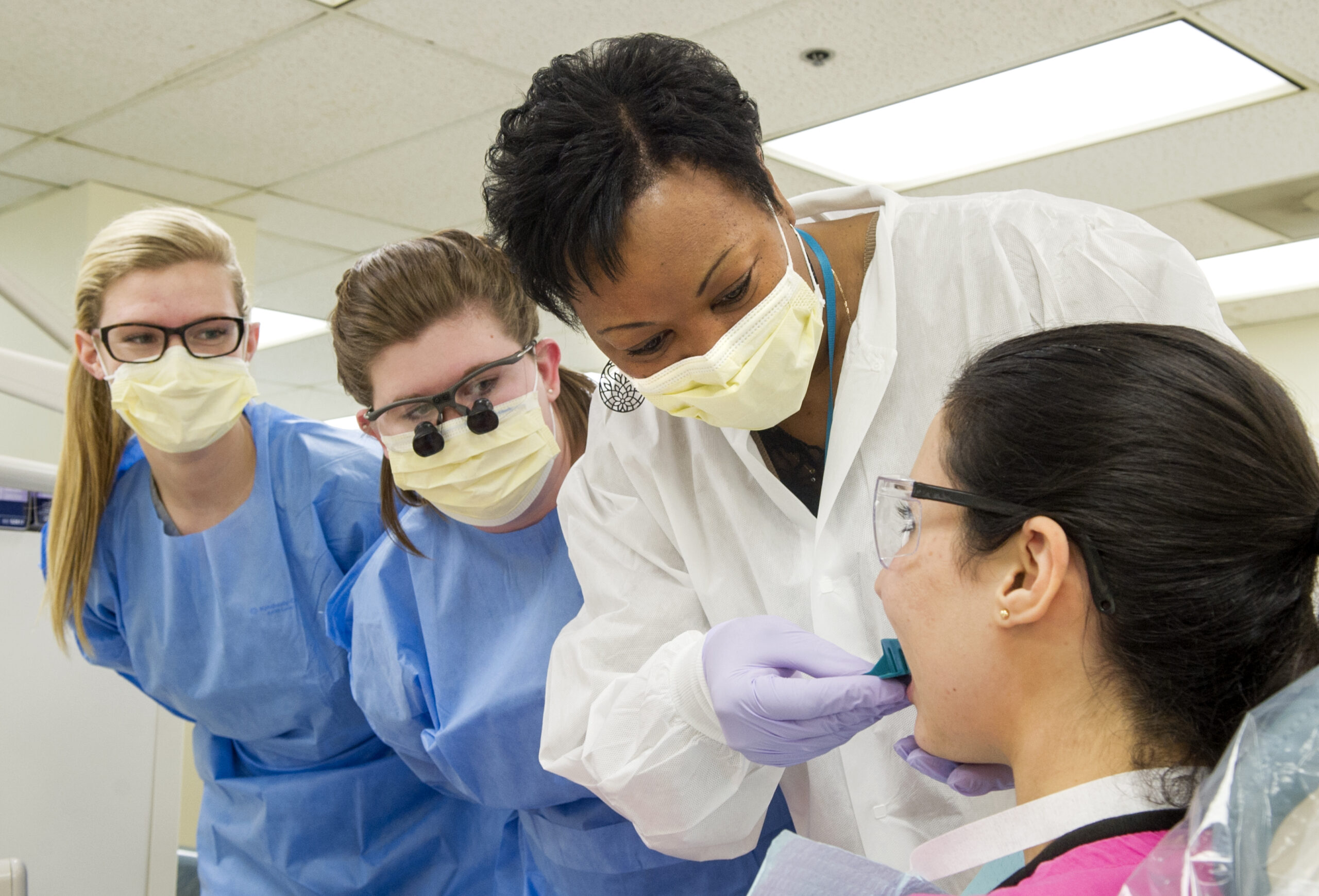Hygienist of all trades

How Stephanie Spann — respiratory therapist, dental hygienist, graduate student, entrepreneur — melds two health care disciplines
Stephanie Spann is accustomed to workdays that flow in neat blocks of time.
As a respiratory therapist, the days used to stretch out in two-hour increments. For 16 years, she made the rounds through the intensive care, trauma and neonatal intensive care units at several Illinois and Missouri hospitals with the punctual rigidity of a light-rail train.
Check the ventilator. Suction the patient’s mouth and lungs of saliva and mucus. Provide breathing treatments with aerosol medications and — with conditions like pneumonia and cystic fibrosis —perform chest physical therapy to dislodge thick, stagnant secretions. When a code blue blared over the intercom, it was all hands on deck.
Spann was drawn to the work but not the 12-hour shifts with little ones at home.
Dental hygiene, her profession since 2002, offered shorter days cut into hour-long appointments. For each new patient this meant taking full-mouth and panoramic X-rays, documenting vital signs, obtaining a medical history, completing periodontal charting, and leaving enough time for a full dental exam and cleaning.
Spann, who is now working toward her Master of Science for Education in Health Care Professions at the college’s Caruth School of Dental Hygiene, brings an uncommon combination of skills to the dental hygiene department.
From the impact of aerosol breathing treatments on oral health to her knowledge of the ins and outs of using oral appliances to treat sleep-related breathing disorders, Spann is sharing her experiences with undergraduate dental hygiene students.
“Stephanie’s got two careers going there,” says Pat Campbell, dental hygiene graduate program director. “I have her do some lectures with students because they are not even aware that they can be the ones to notice their patients have these issues. She lets them know that they are a screening tool,” adds Campbell, citing patients with sleep-related breathing disorders who doze off in the exam chair. “It’s not something all hygienists think about.”
On the cusp of a health care trend
According to the National Sleep Foundation and National Institutes of Health National Library of Medicine patient education materials, 40 million Americans experience a chronic sleep disorder each year. As the numbers continue to rise, Spann is poised to cultivate her expertise into private enterprise.
Her new business venture, S&G Med. Dent PLLC, puts her in the role of consultant to oral health care professionals looking to streamline dental hygiene protocols or integrate sleep-based dentistry into their practices.
Spann has had plenty of practice instructing dentists through her role as a lecturer for Airway Management’s oral appliance classes, which last several days once every couple of months.
“It’s really good to get that other perspective sometimes because we’re so immersed in the dental world,” say Samantha McClure, operations manager at Airway Management, owned by TAMBCD alum Dr. Keith Thornton ’69, at whose Dallas sleep-based dental practice Spann also worked. “Stephanie is really good at melding those two languages into something dentists can understand and bring back with them,” McClure adds.
A deeper look
On the research front, Spann’s thesis will compare the treatment modalities within sleep dentistry.
“I’m excited because this is the ground floor of the whole industry,” says Spann. Her research will examine all treatment options, ranging from medication and surgery to oral appliances and continuous positive airway pressure — or CPAP — machines.
Dr. Paul Dechow, Regents Professor and chair of biomedical sciences, is one of Spann’s thesis mentors and has met with her every month for the past year in preparation.
“She brings a depth of background in respiratory problems like sleep apnea to dental hygiene,” Dechow says. “This is an optimal background for investigations of the effects of oral appliances on breathing.”
With TAMBCD dental hygiene students, Spann’s work continues to leave an impact. Neema and Nessa Pathiyil ’12 worked with Spann on their 2012 Research & Scholars Day project, “Wheezing your Way into Caries,” which explored the impact of asthma medication on oral health.
“Stephanie is the one who told us that there might be a link with asthma and that not all the medication goes entirely into the lungs, that some of it stays in the mouth,” says Neema Pathiyil.
In addition to reviewing their research, Spann connected the sisters with the doctor at a Richardson, Texas, asthma clinic and brought in medications for them to use as presentation props.
The findings have stuck with Neema Pathiyil, who now works at ABC123 Pediatric Dentistry in Houston.
“I see a lot of patients who have asthma problems, and they come in with caries but have no idea how that happens,” she says. “Some of them are on medications that cause dry mouth, and that project has helped me to be able to analyze and help them.”
—Jenny Fuentes